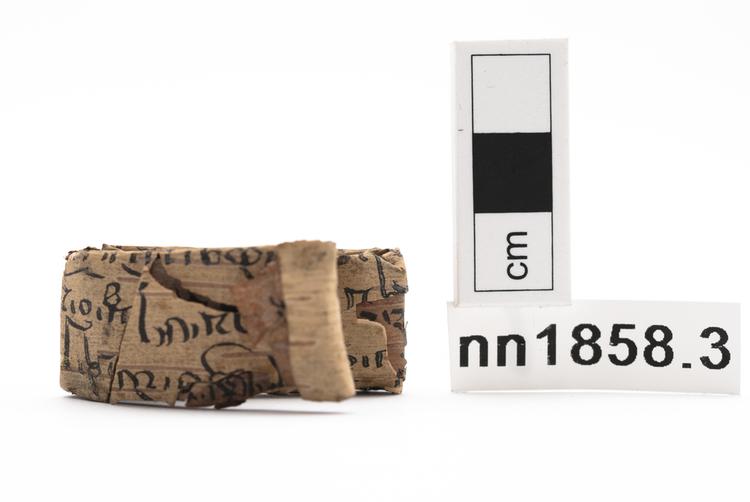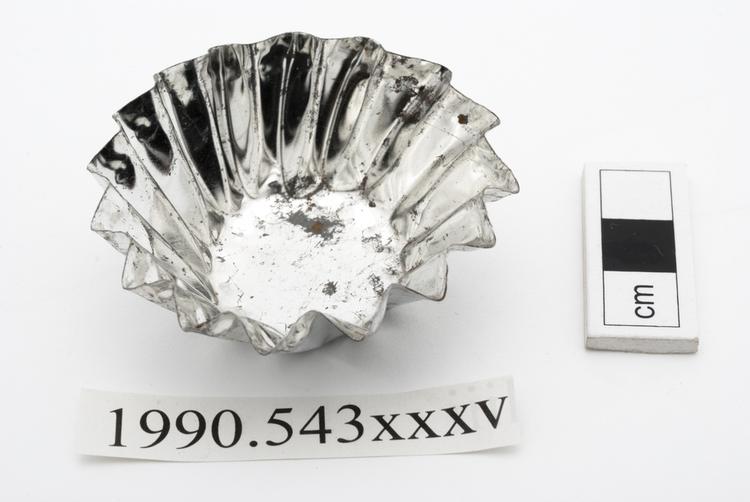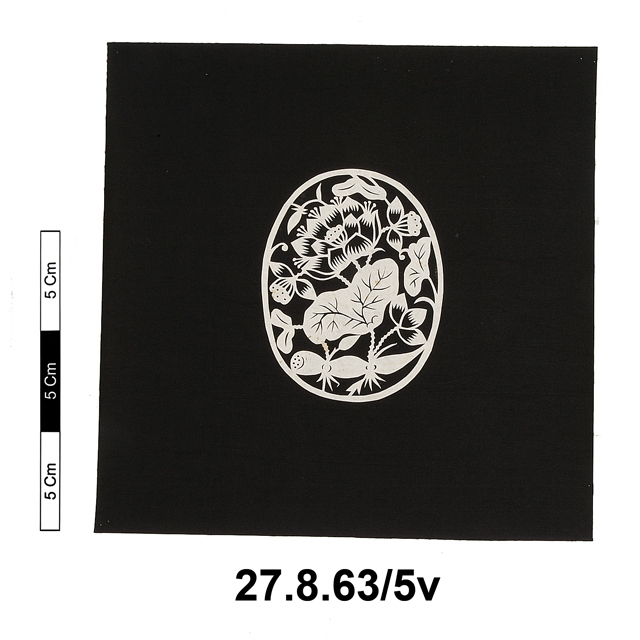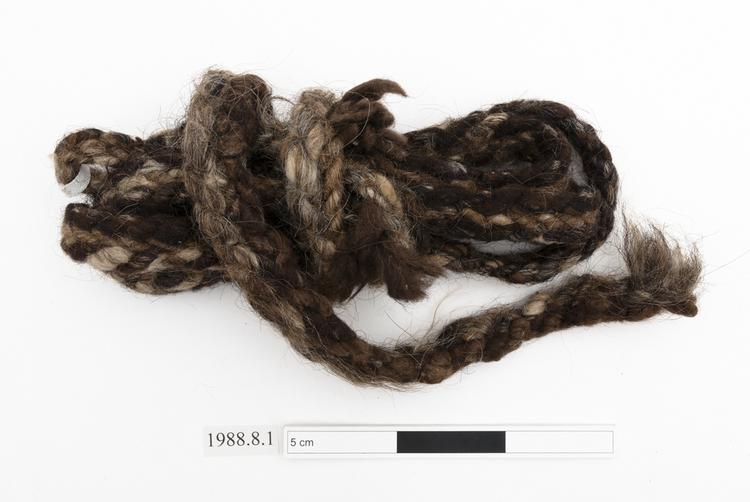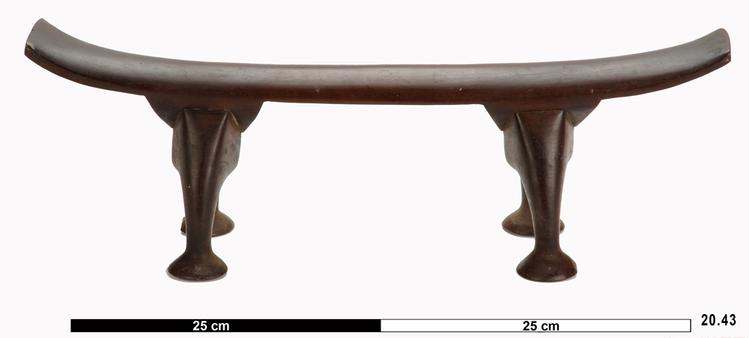
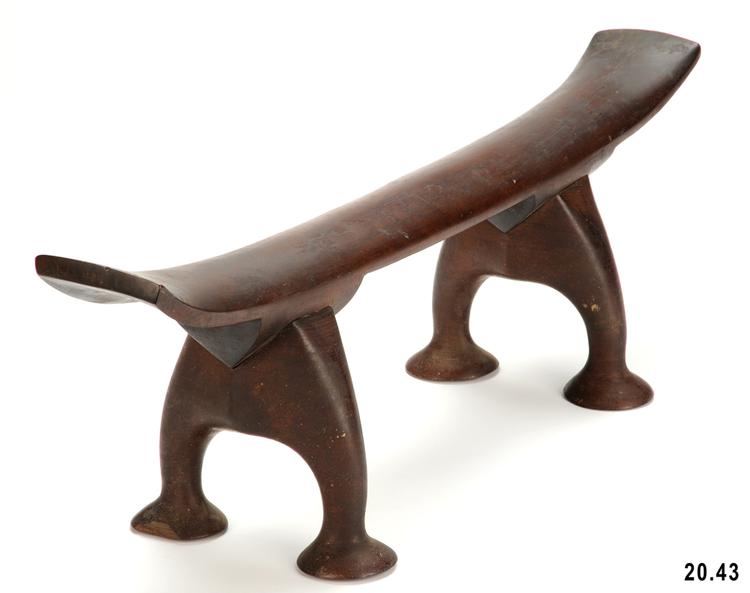
Four-legged wooden headrest made from three pieces of vesi wood tied together with coconut fibre cordage using a hidden-fixing boatbuilding technique. The headrest's bar is lenticular in section and upcurved at the ends.
Headrest, Kali, Fiji, Western Polynesia. Headrests were traditionally made throughout the Pacific, and come in a bewildering variety of beautiful forms. Those of Western Polynesia are among the finest, having delicately curved lines that show their close relationship in style to the stools of Central Polynesia. These curved lines give them an admirable lightness and dynamism of form. Many such Fijian headrests were carved by specialist Tongan and Samoan boat-builders (tufunga fo‘u vaka), who resided in Fiji under the patronage of local chiefs while they used the large Fijian trees to build their sailing boats. This particular design of kali (as this item of furniture was known in Fiji and Tonga) is of a Tongan style known as kali laloni. In this style, the headrest’s four legs are carved in horseshoe-shaped pairs, and each pair is notched with a V-shaped groove. A ridge on the underside of the crossbar sits in this groove, and the legs are tied to the crossbar using a boat-builder’s coconut-fibre cordage lashing through little tunnels drilled in the wood at this joint. The result is an almost invisible fixing which cannot be seen at all from above. Kali of this jointed three-piece style were labour-intensive to manufacture, and so they tended to be the treasured possessions of high-ranking men. Women and children tended to use simpler one-piece headrests to sleep, or nothing at all. Because the Polynesians believed that the head was the most sacred (tabu) part of the body, and chiefly men were considered more sacred than their inferiors, these objects absorbed some sacredness from prolonged contact with the chief’s head, becoming spiritually and physically dangerous for others to touch. Hardwood. Mid 19th Century. Formerly in the private collection of Sir Everard im Thurn.



